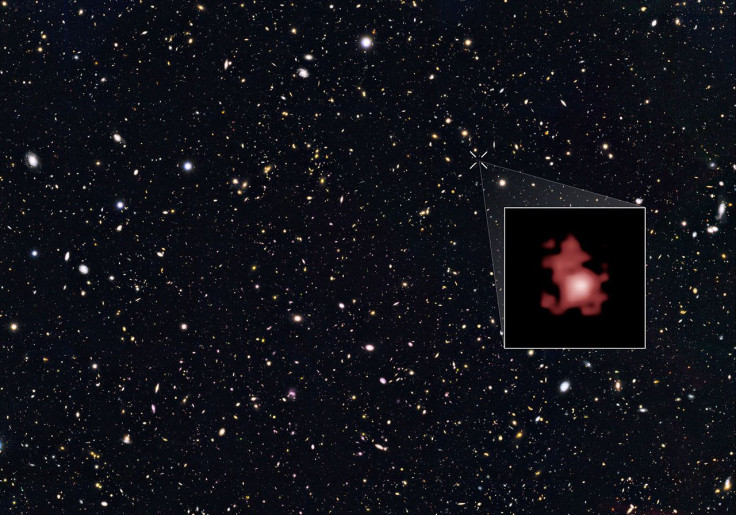Hubble Spots A 13.4 Billion Year Old Galaxy, Shattering Cosmic Distance Record

The Hubble Space Telescope broke its own distance record by measuring GN-z11, a faint galaxy that's 13.4 billion years old, the Hubble team announced Thursday. The observation sets a new cosmic distance record and takes astronomers one step closer to the first galaxies of the universe.
Since the light generated by the galaxy travelled for billions of years to reach Hubble, the telescope is, in effect, seeing into the earliest years of the universe.
"We’ve taken a major step back in time, beyond what we’d ever expected to be able to do with Hubble. We see GN-z11 at a time when the universe was only 3 percent of its current age," said principal investigator Pascal Oesch, from Yale University, in a statement. The research was published in the Astrophysical Journal.
The cosmic record has changed significantly over the last year. The galaxy EGS-zs8-1 was observed with the Keck Observatory in Hawaii at a distance of 13.1 billion light-years from Earth. Its reign as oldest galaxy in the universe lasted a few months after researchers from Caltech discovered EGS8p7 at a distance of 13.2 billion light-years from Earth. It took 13.4 billion years for the light from galaxy GN-z11 to reach Earth.
The researchers used Hubble's Wide Field Camera 3 to accurately measure GN-z11. Measuring the redshift, the change in wavelength to the redder spectrum due to the expansion of the universe, can determine how far a star or galaxy is from Earth.
After determining its distance from Earth, the researchers used data collected by NASA's Spitzer space telescope to learn more about the ancient galaxy. GN-z11 is much smaller than the Milky Way, around 25 times smaller, but it's experiencing a rate of star formation that's 20 times that of our galaxy.
"It’s amazing that a galaxy so massive existed only 200 million to 300 million years after the very first stars started to form," Garth Illingworth, from the University of California, Santa Cruz, said in a statement.
The distance for GN-z11 was believed to have been at the very edge of Hubble's observational field, with galaxies of that age or older more likely to be observed by its successor, the James Webb Space Telescope. "This new discovery shows that the Webb telescope will surely find many such young galaxies reaching back to when the first galaxies were forming," said Illingworth.
© Copyright IBTimes 2024. All rights reserved.






















